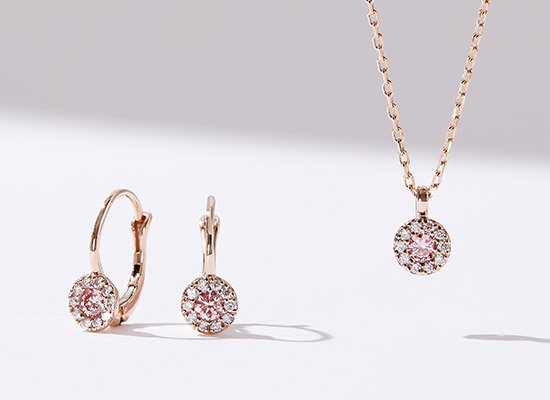1. Introduction
So, you’re thinking about adding a touch of elegance to your ensemble with a diamond necklace? Well, have you considered a lab-grown diamond necklace? In this comprehensive guide, we’ll explore everything you need to know about lab-grown diamonds, particularly focusing on their application in exquisite necklaces.
2. What is a Lab Grown Diamond?
Let’s start with the basics. A lab-grown diamond, as the name suggests, is a diamond created in a laboratory setting rather than being mined from the earth. Despite its synthetic origin, lab-grown diamonds possess the same chemical and physical properties as natural diamonds.
2.1 The Science Behind Lab Grown Diamonds
Lab-grown diamonds are cultivated using cutting-edge technology that simulates the natural diamond-growing process. By replicating the high-pressure, 랩그로운 다이아몬드 목걸이, high-temperature conditions found deep within the earth’s mantle, scientists can create diamonds atom by atom.
3. Advantages of Lab Grown Diamonds
Why choose a lab-grown diamond over a natural one? Let’s delve into the advantages:
3.1 Ethical Sourcing
Unlike mined diamonds, lab-grown diamonds are conflict-free, eliminating any concerns about unethical mining practices or human rights violations.
3.2 Environmental Sustainability
The process of creating lab-grown diamonds produces significantly less environmental impact compared to diamond mining, making them a more eco-friendly choice.
4. Types of Lab Grown Diamonds
Lab-grown diamonds come in various types, each with its unique characteristics. Some common types include:
4.1 CVD Diamonds
Chemical Vapor Deposition (CVD) diamonds are grown using a process where carbon atoms are deposited onto a substrate, forming diamond crystals.
4.2 HPHT Diamonds
High-Pressure High-Temperature (HPHT) diamonds are created by subjecting a carbon source to extreme pressure and temperature, mimicking the natural diamond formation process.
5. How are Lab Grown Diamonds Made?
Curious about the intricate process behind lab-grown diamonds? Let’s take a closer look:
5.1 Seed Crystal Formation
The process begins with a small diamond seed crystal, man made diamonds, which serves as the foundation for the growth of the larger diamond.
5.2 Diamond Growth Chamber
Within a controlled environment, carbon atoms are introduced, layer by layer, onto the seed crystal, gradually forming a diamond.
6. Quality and Certification
When purchasing a lab-grown diamond necklace, it’s essential to ensure its quality and authenticity. Look for reputable certification bodies such as the Gemological Institute of America (GIA) to guarantee the diamond’s authenticity and quality.
6.1 GIA Certification
GIA certification provides detailed information about the diamond’s 4Cs – cut, color, clarity, and carat weight – ensuring transparency and peace of mind for buyers.
7. Environmental Impact
Concerned about your ecological footprint? Opting for a lab-grown diamond necklace can significantly reduce your environmental impact compared to purchasing a mined diamond.
7.1 Carbon Footprint Reduction
The production of lab-grown diamonds emits fewer greenhouse gases and requires less energy compared to diamond mining, contributing to a more sustainable future.
8. Cost Comparison
One of the most appealing aspects of lab-grown diamonds is their affordability compared to natural diamonds. While natural diamonds are subject to market fluctuations and scarcity, lab-grown diamonds offer a more stable and budget-friendly alternative.
8.1 Price Transparency
With lab-grown diamonds, you’ll typically find more transparent pricing structures, allowing you to make informed decisions based on your budget and preferences.
9. Maintenance and Care
Proper maintenance and care are essential to preserve the beauty of your lab-grown diamond necklace. Follow these tips to ensure its longevity:
9.1 Regular Cleaning
Clean your diamond necklace regularly using a mild detergent and a soft brush to remove any dirt or debris.
9.2 Avoid Harsh Chemicals
Avoid exposing your necklace to harsh chemicals such as chlorine or bleach, as they can damage the diamond’s surface.
10. Fashion Trends and Styles
Lab-grown diamond necklaces are not only timeless but also versatile, making them the perfect accessory for any occasion. From classic solitaire pendants to modern geometric designs, there’s a style to suit every taste.
10.1 Layering
Embrace the trend of layering by pairing your lab-grown diamond necklace with other chains of varying lengths for a chic and stylish look.
11. Buying Guide
Ready to purchase your very own lab-grown diamond necklace? Here’s a handy buying guide to help you navigate the process:
11.1 Research
Take the time to research reputable retailers and certification bodies to ensure you’re getting a high-quality lab-grown diamond necklace.
11.2 Budget Considerations
Set a budget and explore options within your price range, keeping in mind that lab-grown diamonds offer excellent value for money.
12. Caring for Your Lab Grown Diamond Necklace
Your lab-grown diamond necklace is a precious investment that deserves proper care and attention. Follow these simple steps to keep it looking radiant for years to come:
12.1 Storage
Store your necklace in a soft pouch or jewelry box to prevent scratching or tangling with other pieces.
12.2 Professional Inspection
Schedule regular inspections with a trusted jeweler to ensure your necklace is in optimal condition and address any maintenance needs promptly.
Conclusion
In conclusion, a lab-grown diamond necklace offers a compelling combination of beauty, sustainability, and affordability. By choosing a lab-grown diamond, you can adorn yourself with a stunning piece of jewelry while making a positive impact on the environment and supporting ethical practices in the diamond industry. So, why wait? Elevate your style with a lab-grown diamond necklace today!



